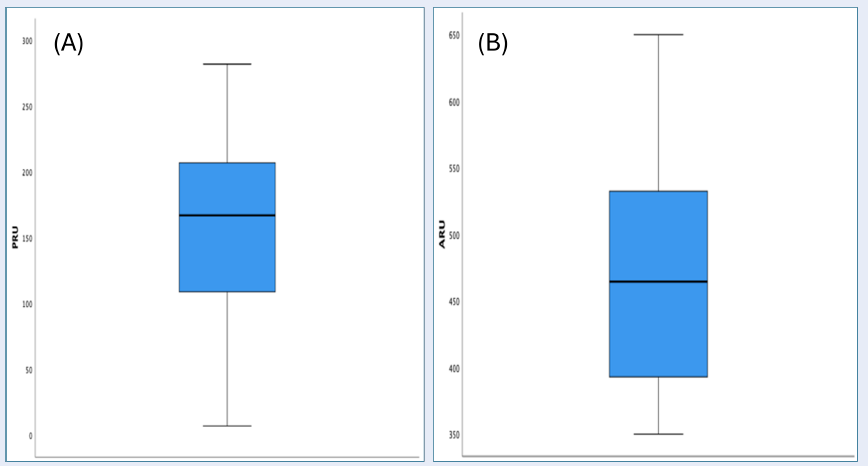Platelet reactivity in patients with coronary artery disease undergoing dual antiplatelet therapy with aspirin and clopidogrel
DOI:
https://doi.org/10.15419/bmrat.v11i5.888Keywords:
platelet reactivity with clopidogrel (PRU - P2Y12 reaction unit), platelet reactivity with aspirin (ARU - aspirin reaction unit), dual antiplatelet therapy (DAPT)Abstract
Introduction: Dual antiplatelet therapy (DAPT), incorporating aspirin and a P2Y12 receptor inhibitor, is advised for patients experiencing acute coronary syndrome and for those with coronary artery stents, aiming to mitigate the risk of cardiac events attributable to thromboses. Nevertheless, the therapeutic challenge lies within the narrow therapeutic window where either excessive or deficient platelet reactivity (PR) during DAPT can predispose to thrombotic events or hemorrhage, respectively. This underscores the criticality of attaining an optimal PR level throughout the course of therapy. Accordingly, this study was conducted to evaluate PR among Vietnamese patients administered with DAPT, examining the implications for coronary artery disease management. This study aimed to evaluate PR in the context of aspirin therapy, utilizing the VerifyNow system, and to evaluate PR in the context of clopidogrel therapy, also utilizing the VerifyNow system.
Methods: A prospective, cross-sectional, descriptive analysis was executed over the period April 2020 to August 2020. In total, 55 patients diagnosed with coronary artery disease and receiving DAPT comprising aspirin and clopidogrel were enrolled from the Interventional Cardiology Department at Cho Ray Hospital. PR was assessed via blood samples using PRU and ARU measurement kits for clopidogrel and aspirin, respectively. Data were compiled and subjected to analysis employing SPSS version 20. The delineation of high PR was set at >550 ARU for aspirin and >208 PRU for clopidogrel.
Results: The cohort's mean age stood at 65.7 years, with a male predominance (male-to-female ratio of 1.6). Mean PR values for clopidogrel and aspirin were 158.966.8 and 462.578, respectively. A significant 25.5% of the population demonstrated high PR to clopidogrel, whereas aspirin-related high PR was observed in 7.1% of the patients.
Conclusion: In the subset of Vietnamese patients undergoing coronary stent implantation, a notable proportion exhibited high PR in response to clopidogrel, aligning with observations in international cohorts. Elevated age emerged as a contributing factor for increased PR, while diabetes was implicated in diminished platelet responsiveness. This investigation enriches the comprehension of PR dynamics in patients subjected to DAPT, suggesting a pressing need for additional studies to corroborate these findings and explore therapeutic adjustments.

Published
Issue
Section
License
Copyright The Author(s) 2017. This article is published with open access by BioMedPress. This article is distributed under the terms of the Creative Commons Attribution License (CC-BY 4.0) which permits any use, distribution, and reproduction in any medium, provided the original author(s) and the source are credited.
